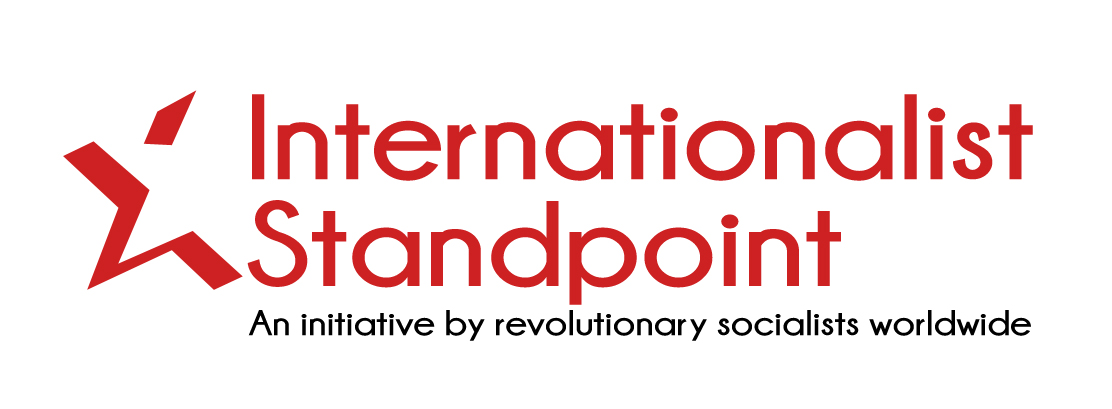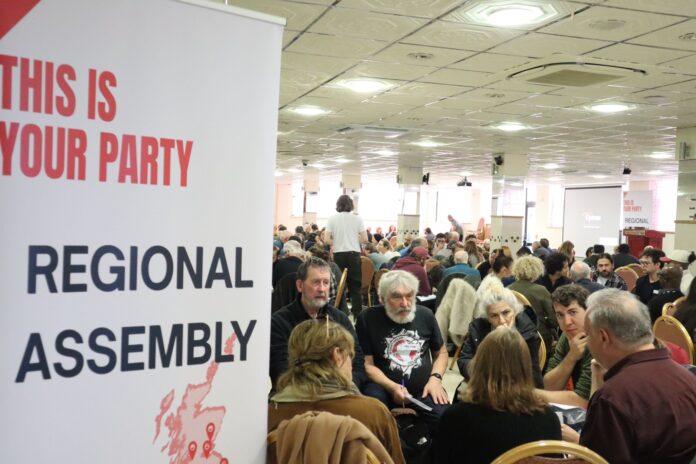This is the latest in a series of articles (read here) on the birth of a new party of the working class in Britain – “Your Party”. The previous articles dealt with complications about setting up such a party and difficulties in getting it off the ground as well as the critical need for such a party. Here we look at the recent developments towards building for the first Your Party conference.
***
Recently, plans have become more concrete and the first documents concerning the make-up of Your Party have been issued (can be found here). It is to be welcomed that those tens of thousands supporting this initiative are receiving concrete information in the form of “draft” documents for the first time and this is affording them the opportunity to discuss ideas in a more structured way. Regional assemblies are also being set up, with the first of these having taken place in Norwich on the 19th October. Twenty-one additional assemblies are planned in the coming three weeks across England, Scotland and Wales. These assemblies are tasked with scrutinising and amending the four documents that have been sent out so far: The Political Statement, The Constitution, Standing Orders and The Organisational Strategy. Your Party states on its website that,
“the brilliant ideas generated, whether on our structures, organising strategy or political positions, will now shape the evolution of the documents as we move forward, with drafts to be updated accordingly and shared with you. This is deliberative democracy in action.”
The Regional meetings will therefore be attempting to put forward amendments and presumably, additions to the documents in the brief time allocated to this process. Meetings are limited to a single day (seven hours) and will take the form of break-out discussion groups that will feed-back to the main group. The small group approach is to allow time for everyone to contribute, at least to their respective break-out group. The findings will then be collated by the facilitators and later shared across the organisation. The reference to drafts being updated and shared across the organisation seems to suggest that an unspecified editorial team will be tasked with trying to make sense of the huge amount of input there will inevitably be into the documents. Will AI be used to categorise ideas and make sense of the blizzard of information or will some other method be used? Who will decide on the ideas to be incorporated into the redrafts? This is not clear. It is not always the most commonly occurring ideas that are necessarily the most powerful. Sometimes ideas that are not in mainstream discourse could prove to be of more value than others that are more part of everyday debate so a simple quantitative metric could prove limiting to originality and innovation. This exercise will almost inevitably prove to be far from perfect but could at least produce a base-line from which ideas can develop, providing that open discussion and debate continues.
***
The Political Statement:
The political statement is very brief, occupying only a single side of A4. However, the tone and content of the statement are to be welcomed. It clearly states that,
“Your Party is a democratic, member-led socialist party that stands for peace, equality, social justice, and international solidarity.”
The fact that within this opening paragraph member-led socialism is brought to the fore is encouraging and the general principles which it states are progressive but there is a worrying absence of the climate change issue in the opening paragraphs. It is hard to understand why climate isn’t given prominence right at the start of the document and is in fact relegated to a two word reference in the penultimate paragraph,
“Both at home and abroad, Your Party stands against the war economy, and the neoliberal capitalist order fuelling the climate crisis and grotesque levels of inequality“.
It is difficult to achieve balance in a very brief statement but the text should make a clearer reference to the climate issue and state that socialism is the only way to overcome the climate crisis. The reference to, “public and community ownership of key economic sectors and services,” is good but mention should also be made of workers in those industries playing a pivotal role.
These criticisms, although significant, should not detract from the positive overall message that the document affords. We will come back with further articles commenting on the draft programme in subsequent articles.
***
The three other documents: The Constitution, Standing Orders and Organisational Strategy are much more substantial and try to address organisational issues as well as, to some extent internal culture.
It is concerning that at this stage a draft code of conduct has not been produced because it would appear that such a large organisation will attract people intent on disrupting its functioning from the start. A code of conduct could offer some protection from attack and more importantly be used to protect the welfare of its members, ensuring, as far as reasonably possible that meetings and events are safe spaces.
The three structural documents contain quite a lot of repetition and it might have been better to have a Constitution with a Code of Conduct along-side it issued together.
***
Constitution:
Within the structural documents there is an attempt to look at how Your Party will be built and organised. Unfortunately, the use of language within the documents is traditional and conventionally hierarchical. There appears to have been a decision made to have a single “leader”, rather than joint leadership, which was initially proposed when Zarah Sultana stepped forward. The term spokesperson is used elsewhere in the documents and until the Party gets off the ground this term could be used for key speakers such as Jeremy Corbyn and Zarah Sultana. This would avoid the issue of establishing a traditional leadership structure and give time to consider other options. A look at other forms of leadership is suggested for the future but there seems to be no reason why at a least a joint leadership could be considered currently with more imaginative and democratic forms of leadership coming further down the line.
There is also reference to the Leadership Team, rather than a coordinating team, and much worse a Central Executive Committee CEC. The term “Central” suggests that this will be a London-centric organisation. This notion will not be welcome in the Scotland, Wales or the English regions, who will insist on being proportionally represented. Although there are allocations made to regional members of the CEC, this would still leave a bias in favour of London. The term “Executive”, indicates executive powers and reflects the language of neo-liberalism and the traditional left rather than a new dynamic organisation. A term like Coordinating Committee, rather than Central Executive Committee, would be preferable. It is likely that any Coordinating Committee will have to make tactical decisions, but should not be authorised to make strategic ones as is proposed in the document. Tactical decisions will not always be able to benefit from full consultation as they are made because any organisation has to be able to react flexibly to events as they arise. Wider consultation can be built into the Party structures, especially with the use of new technology so that tactical decisions can be modified both at the annual conferences but also across the regional and branch structure which will emerge. Strategic decisions should be made by Conference or the wider membership with the use of new technology. However, new technology cannot substitute for face-to face meetings but technologies such as Zoom can assist in more people being involved in the democratic process.
Branches are mentioned and the proto-branches that are emerging are crying out for the membership to be made open to them, so that they can begin to really get involved in building in their communities. There is a diminishing lack of patience at the fact that this information has not been revealed and it remains unclear when it will be made available. Branches will also require funds from the membership subscriptions that are already pouring into Your Party. These should begin to be shared with the regions and the branches that are emerging. Branches will be the driving force that could make Your Party break-through into a party of mass support. There are many people really keen to get involved in community engagement including mass canvassing, which would mark out Your Party as serious, unique and a party connected to the people.
In the section on branches there seems to be an avenue for other political parties to be affiliated to Your Party.
“In the Party’s first two years, provision shall be made for Provisional Associate Branches, enabling existing local and community independent groups, already registered with the Electoral Commission, to affiliate politically to the Party without immediately subsuming themselves to it.”
This appears to be an invitation to working with local groups and parties but excludes national organisations such as TUSC, Socialist Workers Party and Socialist Party etc. The document is very clear that after the first two years it will have a unitary structure. We would favour a nationally organised affiliation of left parties in some kind of federal structure. The intention to work towards affiliating trade unions is important in recognising that trade unions can play a key role in supporting the building of Your Party.
These decisions have therefore been taken by the Independent Alliance of MPs who are afforded “stewardship” of Your Party until March 31st 2026. Elsewhere in the document, power is given to the 16-person Central Executive Committee CEC to decide on which groups can affiliate to Your Party, rather than it being a decision for the membership. The CEC will also appoint the National Officers. The 16 person CEC will therefore have enormous powers from the outset.
While attention to detail around branches is lacking, there is a lot of prominence given to the people who will be engaged in the strategic work of Your Party. A whole “leadership” structure is outlined with the number of people involved and even some of the personnel, as the elected MPs will have a leadership role beyond the conference and until March 31st 2026. The Central Executive Committee will be tasked with generating the broader organisational team. There will be branches and a branch structure is suggested but this seems to be a matter for the future with much of the emphasis at this stage on regions and individual members. Community Organising Units are also described – these appear to be like united front organisations that engage with activist groups and serve as “an anchor between Your Party and local communities, giving people on the ground the resources to campaign at an autonomous, local level.”
***
Standing Orders:
The Standing Orders document attempts to suggest alternative structures for the organisation and has a system for members to choose from a range of limited options. It also makes suggestions for how branches could be organised at a regional and local level. The document attempts to offer approaches to organising: conferences, local Party meetings and assemblies as well as conducting Party elections. There is also a section on policy development. These are important sections of the document but the voting options that are suggested tend to narrow the discussion at this very early stage.
***
Organisational Strategy:
This document attempts to be more structured in its approach and gives a lot of attention to the “leadership” with four of the nine sections devoted to choosing a leadership and very little attention given to structures beyond the national leadership teams. It is clear that a decision has been taken not to stand in the local elections in May 2026 in spite of the fact that many local branches will wish to put candidates forward and moves towards this as well as working with other groups are already being discussed at a local level. Instead, Your Party will
“For the unique case of the 2026 Local Government elections … will seek to support all Independent socialist candidates of good standing where there is evidence of candidates being engaged in community campaigning and having the support of their local communities or trades unions branches.”
As described above, local and regional meetings are now under way. How much discussions at these meetings affects the nature of the four documents remains to be seen. Will new and even controversial ideas be welcomed? Will orthodoxies be challenged? Will the voice of the many be able to be heard against the noise of the current leadership’s own political priorities? There contains promise in Your Party’s inception. The task of the membership is to build the branches and for discussions about the future to be open, comradely and pragmatic. Although critical of parts of this process, at least this process is taking place and it is the duty of Marxists to try to bring their best endeavours to bear.
***
The rise of the far-right in Britian cannot be ignored. The collapse of the Labour Party seems almost complete. In the recent by-election in Caerphilly (Wales) the Labour vote was cut from 13,289 less than two years ago to 3,713. Plaid Cymru (Welsh Nationalists) took the seat with an increase in their vote of 7,750 to gain 15,961 votes. But lurking in the wings is Reform UK who finished second with 12,113 votes. When people talk about the way to fight the right and overcome the rise of the far-right and Reform UK, one must recognise that the working class no longer has a political voice. Your Party is an opportunity to give them a voice and to beat back the forces of reaction.



